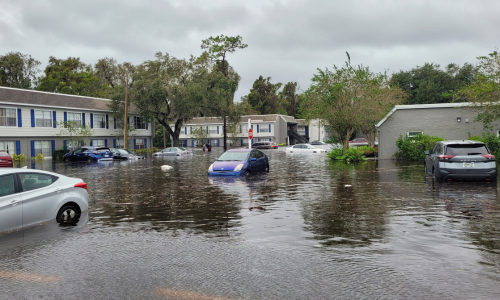What does SAE J3277 mean for EV Batteries’ packs performance and safety?
Guest Post by Hemi Sagi, SAE J3277 and SAE J3277-1 Documents Sponsor
Posted: April 23, 2024
Many questions surround electric vehicles as they become more prevalent in the market, but one looms as the largest—and arguably most important: is it safe?
Vehicles using high voltage systems for electrified propulsion are expected to be introduced to the market in increasing quantities, including plug-in electric vehicles (EV) and hybrid electric vehicles (HEV). These vehicles include Rechargeable Energy Storage Systems, RESS (battery packs) that might be mounted in locations that are exposed to water, either through rain and snow weather conditions or relatively low levels of standing water. Users of these vehicles are anticipated to have some amount of assurance that such water exposure will be unlikely to result in harmful water leakage into a battery pack.
Recent events, as Hurricane Ian in Florida in 2022, and Hurricane Idalia in 2023, demonstrated that current EV aren’t well protected against water ingress into the battery pack. Water ingress into the battery pack during Hurricane Ian impacted an estimated 3000-5000 EVs at various levels. Approximately 600 EVs were total loss and of those, approximately 36 EV’s battery packs experienced thermal run-down (fire) which is challenging to distinguish(1). These vehicles included multiple models from several OEMs.(1)
Currently, the common regulatory requirement, particularly in China and South Korea, is to comply with the Ingress Protection (IP) standard IEC 60529, typically at the IPX7 level. However, the traditional method of testing for compliance to this standard, involving immersion in water for 30 minutes, is not practical for in-line quality assurance tests during production. Conversion of this type of functional requirement (as IPX7) into a production leak tightness specification has been a challenge.
SAE J3277 introduces the Equivalent Channel (EC) method, leveraging a concept widely used in the automotive industry since the early 2000s. This method offers a more practical approach to convert functional requirements like IPX7 into in-line, non-destructive leak test requirements.
The equivalent channel represents the maximum allowed leak path geometry, it can be reproduced and used during functional and production verification of leak test systems used in a production line.
Given the diverse designs of battery packs in terms of size, material, and electrical systems, a one-size-fits-all EC is not feasible. Instead, the EC method, per SAE J3277, offers a production leak tightness specification that can be tailored to individual battery pack designs. Properly applying the EC leak tightness requirement per SAE J3277 should replace the water immersion test with similar or better results.
What’s New in SAE J3277- Informational Report(IR)?
The SAE J3277 addresses two leak tightness cases:
- Water Ingress Protection into the battery pack, using IPX7 as an example.
- Coolant leakage from the battery pack cooling system into its headspace.
Two approaches are offered for Water Ingress protection. First one, (based on IEC 60529) is allowing minimal water ingress (few drops) within 30 minutes as agreed between OEM and Supplier. Second is a more conservative approach requiring no water ingress within 30 minutes, as per ISO 6469-1.
The coolant leak tightness requirement is “no sustainable leakage of coolant into the battery pack headspace”.
The EC size ranges is estimated using the analytical tools provided in the IR, followed by an empirical test, per the guideline and example in the IR. The final EC (diameter and length) is established based on the empirical test. Once EC geometry is defined, proper air or tracer gas flow versus pressure curves can be developed and used as a threshold during production leak testing.
How to implement the leak tightness requirement developed per SAE J3277 IR?
This document is a precursor to SAE J3277-1, which will present the practices to qualify that product leak tightness is equal or better than the maximum allowed EC for that product using applicable and commercially available leak test technologies.
By adopting SAE J3277 and its associated practices, we can elevate the standard of EV battery pack safety and performance, mitigating incidents like those experienced during recent hurricanes.
1) Tanvir Tanim and el., “A Teardown Study of Flood Damamged Electric Vehicles” SAE Government/Industry meeting , January 16-18 ,2024 Washington, DC, USA.
